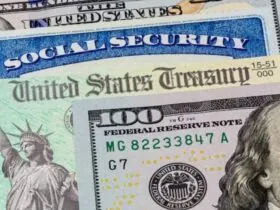Many people consider $2 bills as ordinary currency, but some can be worth significantly more than their face value. Certain rare $2 bills have sold for astonishing amounts, with collectors paying as much as $20,000 for unique examples. If you have a $2 bill tucked away, it might be worth examining closely—you could be holding a valuable piece of history.
This article explores the history of the $2 bill, the factors that make some of them highly collectible, and how to determine their value.
A Brief History of the $2 Bill
This Article Includes [hide]
The $2 bill has a rich history dating back to the 1860s. Over time, its design and features have evolved, with six distinct types of $2 bills issued. Since 1928, the note has featured Thomas Jefferson on the front, while the reverse side has depicted either Monticello, Jefferson’s estate, or the signing of the Declaration of Independence.
Despite being in circulation for over 150 years, $2 bills are rarely used in daily transactions. Their unusual status adds to their intrigue among collectors and enthusiasts.
What Makes a $2 Bill Valuable?
Not all $2 bills are equal in value. Several factors influence their worth, including unique serial numbers, printing years, condition, and overall rarity.
Unique Serial Numbers
Serial numbers play a critical role in determining a $2 bill’s value. Collectors often seek out patterns that stand out, such as:
- Solid Numbers: All digits are the same (e.g., 77777777).
- Ladder Numbers: Sequential numbers in ascending order, like 12345678.
- Low Numbers: Serial numbers beginning with “1,” especially from 1976, can fetch prices up to $20,000.
These distinct patterns make bills more desirable to collectors, driving up their value.
Year of Issue and Seal Color
The year a $2 bill was printed and the color of its seal are key indicators of its rarity. For instance:
- Bills issued between 1862 and 1917 with red, brown, or blue seals are especially scarce, with values reaching up to $1,000.
- Older bills, particularly those printed before 1920, tend to be more valuable, especially if they are well-preserved.
Condition
The condition of a bill significantly affects its market value. Collectors prioritize notes in pristine condition, often referred to as “uncirculated.” High-value $2 bills are usually free from folds, tears, discoloration, or stains. Conversely, even minor imperfections can greatly reduce a bill’s worth.
Determining the Value of Your $2 Bill
When assessing the value of a $2 bill, consider these types of valuations:
- Catalogue Value: The average price for similar bills in the market.
- Purchase Price: What a dealer might pay to acquire your bill.
- Public or Retail Value: The price a dealer charges a customer.
- Wholesale Value: The price dealers negotiate when trading among themselves.
Current market trends and collector demand also play a significant role in determining a bill’s worth.
Steps to Evaluate Your $2 Bill
- Examine the Serial Number: Look for rare patterns such as ladders, solid numbers, or low numbers.
- Check the Year of Issue: Bills printed before 1920 are typically more valuable.
- Assess the Condition: Ensure the bill is in mint or near-mint condition for maximum value.
- Research Its Rarity: Investigate how many bills from that year were printed and how many remain in circulation.
Selling Your Rare $2 Bills
If you discover that your $2 bill is rare and valuable, you can sell it through reputable auction houses such as Heritage Auctions or Stack’s Bowers. These organizations specialize in collectible currency and can help you secure the best price.
Before selling, it’s wise to have your bill professionally graded by services like the Professional Coin Grading Service (PCGS). A grading certificate verifies the bill’s authenticity and condition, making it more appealing to potential buyers.
What If Your $2 Bill Isn’t Valuable?
Even if your $2 bill lacks rare features, it remains a fascinating historical artifact. Many people hold onto these bills as sentimental keepsakes or conversation starters. Additionally, market preferences can change, so your bill might gain value in the future.
Conclusion
$2 bills are more than just currency—they are pieces of history that can be worth far more than their face value. By understanding what makes them valuable and knowing how to evaluate them, you could uncover a hidden treasure. Whether you’re a collector or a casual owner, the $2 bill offers a glimpse into the rich tapestry of American monetary history.
Also Read:
THIS IS ONLY A BLOG POST FOR INFORMATION – WE DO NOT BUY, SELL, OR APPRAISE THESE ITEMS











Leave a Reply